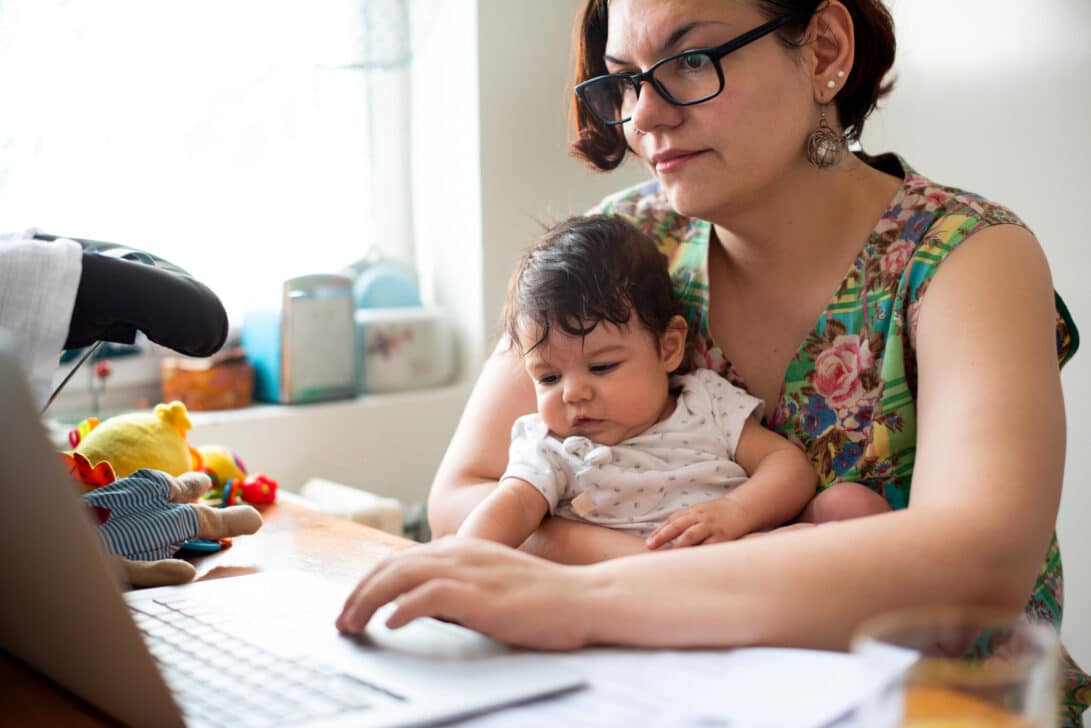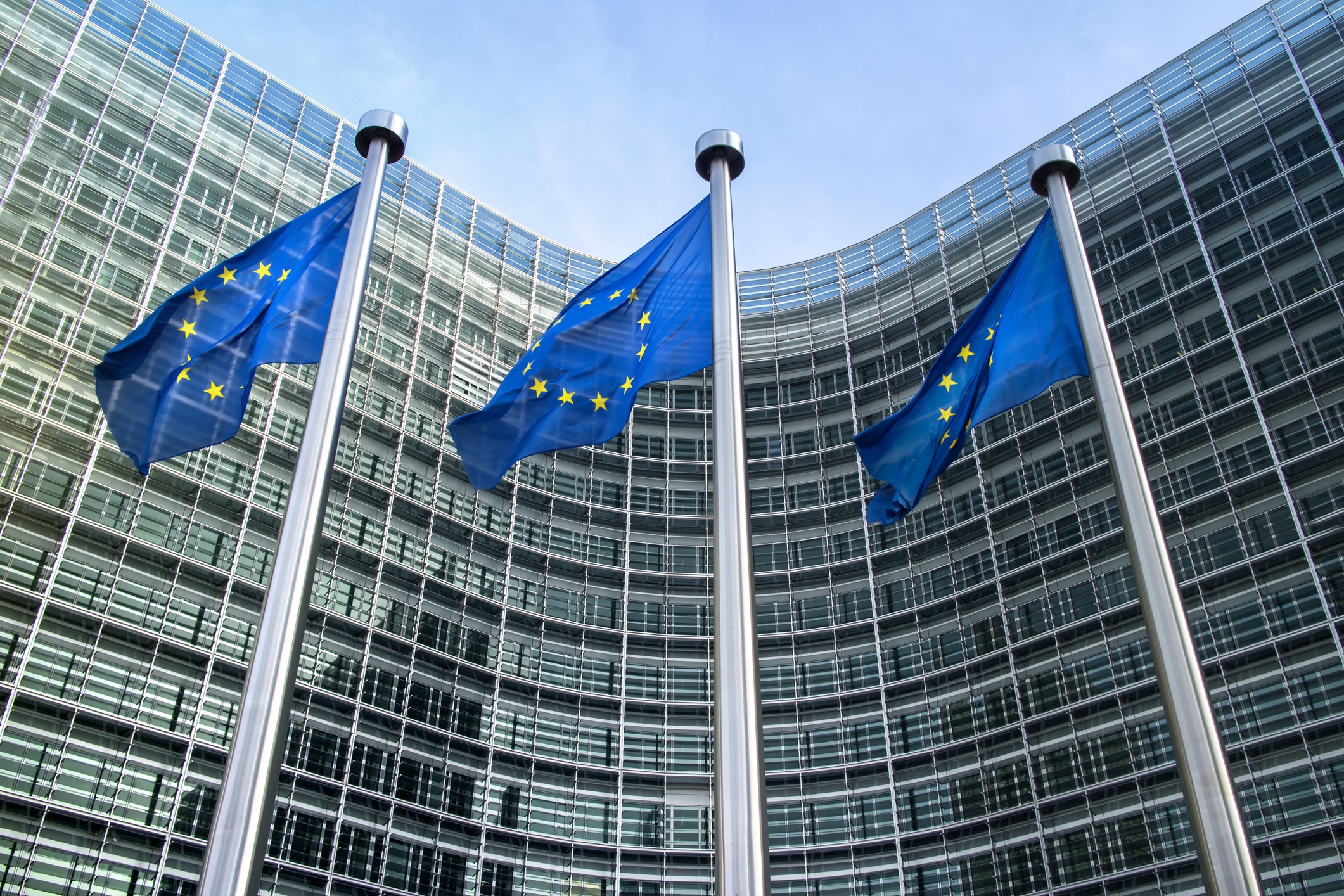Over the last couple of years, every aspect of our lives has been shoved into a large washing machine set to maximum spin. Where, how and when many of us work has evolved dramatically and it looks as though many of the changes are here to stay.
Even though COVID restrictions have eased in most countries, employees haven’t all been flocking back to their old work patterns. Offices remain half full as people continue to “WFH” (work from home). The “TWATs” (Tuesday, Wednesday and Thursday in the office) have risen. Some people are simply refusing to head back into the office, choosing to head off to pastures new as part of the “great resignation” or “great reshuffling.”
Gartner estimates that 32 per cent of all workers globally are now remote workers, up from 17 pre-pandemic.
The Partnership for New York City, a non-profit organisation that aims to build a more vibrant and inclusive economy in the city, has reported that just 8 per cent of office workers are back in the office five days a week, with some 28 per cent of those who could work in offices working fully remote. It’s worth remembering, however, that some jobs just can’t be done at home; putting out a house fire doesn’t work from the comfort of your armchair.
The same pattern is replicated in ‘professionals’ across other major cities from Berlin to Bangkok, Singapore to Sydney.

Only 8 per cent of New York City office workers are back in the office five days a week. Picture by ventdusud on iStockPhoto
For employees it’s been complicated. How do you master the new technologies and ways of working that your company has brought in? Does your organisation trust you or is it using some kind of Orwellian productivity software to make sure you’re not just skiving off? How do you ignite that creative spark when you’ve just got the dog to bounce ideas off? How do you motivate yourself and feel happy in your job? How do you sustain a sense of loyalty or belonging? How are you going to learn, develop and get promoted?
For employers and policy makers too, the new hybrid work era presents enormous challenges. How do you make sure that employees don’t get cut-off, exploited or suffer mental health issues? What are your expectations and how do you communicate them to your teams? What do you do with the office space that’s not fully utilised and what actually is the role of the office? How can you nurture your culture and create a common purpose? How do you transform a tax system based on employees living where they work to borderless work?
Nobody knows
Unsurprisingly, there are many views about the best way to navigate through the uncertainty and what actually works. Ultimately nobody has all the answers yet, but there’s an enormous amount of trial and error going on.
Speaking on a panel at the Davos World Economic Forum, Lynda Gratton, a British organizational theorist and Professor of Management Practice at London Business School, puts it succinctly: “We’re in a period of intense experimentation at the moment. We’re going to learn by doing.”

More than a quarter of women working at home with children say it reduces their concentration on work. Picture by StockRocket on iStockPhoto.
There’s some evidence that this new pattern could actually be better for productivity. Chano Fernandez, Co-CEO of software company Workday points to a “five per cent productivity uplift” of having a hybrid workforce. Good news for the boss.
But research by Stanford economist Nicholas Bloom has found that you’re less likely to be promoted if you don’t go into the office. Bad news for the home worker.
Swings and roundabouts. The only real question is when to speed up, when to slow down and when to jump off.
Big business is spending big
Some large companies are using their scale and resources to embrace the chaos and create near-total flexibility.
Advertising group Publicis is allowing its entire workforce to work from anywhere in more than 100 countries worldwide in 2022. To help make this happen, they have created a goldmine of information and support through their internal HR system (it has a name: Marcel) and have even created an internal form of Airbnb called Home Swap Home for employees to change places.
Consumer goods giant, Unilever, has told staff that they can work from anywhere as long as it represents a “reasonable commute” to the office. This means that employees should be able to get to a meeting in the office within 24 hours.
Not to be left behind, Silicon Valley tech giants including Twitter and Meta have said that their teams can continue to work from anywhere in the world if their job roles allow it (there are probably a bunch of provisos in this). But this may come at a cost, with salary reductions or the removal of city weightings for those who choose to live away from the mother ship.
But the day of the mega-office, croissants for all and, perhaps, slides between floors is far from over. There are many companies taking big bets on a better office being an attractive proposition for recruitment and retention. Perhaps none bigger than global finance giant Citi, which has recently announced a total refurbishment of its landmark Citi Tower in London’s Canary Wharf.
Citi offers their UK staff the opportunity to work three days a week in the office and two at home. But they say that most people actually choose to be in the office full time and, therefore, they need to make the outdated 42-story tower – the 10th largest building in the UK – as comfortable and practical as possible.

The interior of Citi Tower as it will look in 2025. Picture courtesy of Citi.
“Our aim is to create an environmentally sustainable, innovative and exciting place to work, incorporating modern design, state-of-the-art technology, and best practices in employee and client spaces,” said David Livingstone, Citi’s EMEA CEO.
Technology that allows remote or ‘asynchronous’ working (logging on at any time of your choosing) is to play a major role in the refurbishment of the building, which will be completed in 2025. As the most globally dispersed of all the large investment banks, they are investing heavily in the best meeting equipment to make the experience of multi-location working as good as it can be.
In an echo of how Google famously enticed their staff to stay at work with free sushi, sleep pods and supermarket deliveries, Citi will also be providing the option of on-site GP consultations, a gym, wellness centre and a food village with a high emphasis on keeping its bankers suitably caffeinated.
The environmental impact of the new Citi Tower has been central to the planning and design. The decision to refurbish the building and bring it up to modern efficiency and environmental standards instead of demolishing the existing structure is expected to save the release of an estimated 100,000 tonnes of embodied carbon, the equivalent of running almost 22,000 family cars for a year. They calculate that updating infrastructure and implementing efficiency measures will also minimise electricity consumption and reduce water consumption by 20%.
“We’re a business of energy and ideas, and we thrive on bringing people together,” continued Livingstone. “Our rejuvenated EMEA headquarters will be designed to maximise collaborative work-spaces, supported by technology, to enable us to work flexibly and with maximum agility.”
Some large companies are going even further to reimagine the role of the office. Japanese technology company Fujitsu has said it’s going to create three types of office as it adapts to the ‘new normal’ working styles.
Lynda Gratton explains: “One type of office is near people’s houses, in a place like a train station; that’s all about reducing the commute. The second is where you can book in to meet somebody. The third is where people come together for creative engagement.”
Not only are they applying this to their own 130,000 people, they’re also taking the learnings from their own transformation and selling it under the banner of “FUJITSU Work Life Shift Solutions”. Smart working.
Google and the other tech companies led the way in building mega-offices that are like towns. Inside Google’s HQ. Video from TechVision.
Small businesses are feeling their way
Top-down systemic change can work well for large companies with globally distributed workforces – and a few billion pounds to spend. But it’s more difficult for smaller companies, which account for some 70 per cent of the whole employee base in most large economies.
They may not be able to make huge, structural changes, so their focus is on how to make the best of the hand they are dealt. Many are doing this by focusing relentlessly on ensuring the welfare of their employees and the satisfaction of their customers.
Ruth Kieran is CEO of communications agency Cirkle, which employs around 70 people and has offices in London and Marlow. She says her biggest challenge is to find and retain high-calibre people. “It’s partly an industry issue and partly about scale as we’re growing fast. Quite a lot of people have simply left the industry. There’s also salary inflation.”
Cirkle puts a lot of emphasis on being a great place to work and rewarding staff for their efforts. It became an employee owned trust (EOT) in 2018, with the staff holding a majority of the shares and the founder retaining the balance. This proved to have real financial value, as the agency was acquired by Huntsworth plc in April this year.
The loyalties and closeness you feel as a team would be harder longer term without seeing each other
The agency is also very focused on allowing individuals to thrive within the workplace. They offer a fully flexible approach to working hours and location. Ruth Kieran points to one member of staff who relocated to South Africa during the pandemic and worked remotely.
But she explains that this total flexibility has potential downsides for both employee and employer. When confronted with catching an early train in the pouring rain, the option of trekking into an office often doesn’t seem attractive. Once you are in the office, with the ongoing reduction in face to face meetings, is it practical to spend all day on Zoom calls or would that actually be better done from home?
“We’re in a really weird situation – sort of half in, half out”, she observes. “It was actually much easier when we were just locked down. Everyone was doing the same thing so you just got on with it. [Now] every single person’s expectation is different.”
With respect to culture, remote working can be problematic as it doesn’t necessarily create the same feelings of loyalty or closeness to colleagues and the points of difference between one job and another are far fewer.
“What defines one agency or one job from another is just different faces on a Zoom call,” Ruth Kieran continues. “Hence why people are being driven by salary increases. If they’re going to sit in their bedroom, they might as well sit in their bedroom for another few thousand a year. The loyalties and closeness you feel as a team would be harder longer term without seeing each other.”
She says it’s the younger members of her team who generally want to come into the office, for a sense of camaraderie as well as getting the opportunity for on the job training (as opposed to formal training sessions) and observation: “just learning the fundamentals of how an office and the social network of a business works”. In her business, like many others it’s the senior people who are most likely to want to work from home.
Within that context, Ruth is very aware of putting culture first and making sure to encourage people to learn about each and have “those little micro-conversations”.
As so often, it’s what’s not said that has the biggest long-term impact.
Regulation and social structures are changing too
Another adaptation to working patterns that businesses and policy makers are looking at is a shift to a four-day working week. The pandemic, with the rise in mental health issues, hyperconnectivity and technostress, has accelerated consideration of more radical approaches for the wellbeing of workers.
In Belgium, employees will soon have the legal right to manage their working hours and choose a four day working week. This means that employers will need to assess their output and whether or not they are delivering against objectives rather than just spending a certain amount of time doing the work. The legislation, it is hoped, will reduce burn-out and stress.
Announcing the reform package, Belgian prime minister Alexander de Croo told a press conference: “We have experienced two difficult years. With this agreement, we set a beacon for an economy that is more innovative, sustainable and digital. The aim is to be able to make people and businesses stronger.”
Under the Belgian proposals, employees will be able to condense the current five-day week into four days. In practice, this means maintaining a 38-hour working week (which is protected by the EU’s Working Time Directive), with an additional day off to make up for the longer work days.

The European institutions are looking at regulations to ensure healthy and productive hybrid or remote employment practices. Picture by artJazz on iStockPhoto
California was also considering a similar four-day work week but the plans have recently been put on hold as they failed to garner support to get into the Legislature. It doesn’t seem that the proposals are going to see the light of day again there any time soon.
The EU has reacted relatively swiftly to the enormous upheaval in the work landscape and is at the forefront of protecting workers’ rights when ‘teleworking’ in the hybrid, digital-first workplace. Additional EU-wide regulations to protect online workers’ privacy from snooping bosses is being pushed through, as well as a ‘right to disconnect’, which will allow them to turn off work devices and ignore messages after hours without reprisals.
The declaration on digital rights and principles “covers key rights and principles for the digital transformation, such as placing people and their rights at its centre, supporting solidarity and inclusion, ensuring the freedom of choice online, fostering participation in the digital public space, increasing safety, security and empowerment of individuals, and promoting the sustainability of the digital future.” It’s also underpinned by a raft of other existing rules to protect workers’ rights.
Speaking at an event organised by the #Workanywhere Campaign, Frank Siebern, Head of Unit, Fair Transitions Research at the European Commission, points out that there are costs and risks associated with the increase in teleworking. “There is an important gender dimension in this,” he says. “We have seen in recent studies women especially are reporting a deterioration in their work life balance due the combined nature of work and family related tasks.”

Southern Italian regions such as the Gargano peninsula have seen young people returning from the cities. Photo by zm_photo on iStockPhoto
This is backed up by research commissioned by the European Parliament. It found that of people teleworking full-time with small children at home during the pandemic 27 per cent of women and 19 per cent of men found it difficult to concentrate on work. On the other hand, about 31 per cent of women and 22 per cent of men who are teleworking full-time, with small children at home, said that their work prevented them from giving the time they wanted to their family. So boundaries and protection really are crucial to ensure that employers and workers get the most out of the arrangement and nobody is short-changed.
We don’t want the lonely lockdown-induced home working of the pandemic to become synonymous with remote work
Remote or hybrid working may also be having some unexpected societal effects. Also speaking at the #Workanywhere Campaign event, Italian MEP Brando Benifei from the Group of the Progressive Alliance of Socialists and Democrats in the European Parliament, highlighted some unexpected effects on certain rural areas of Italy. “There are many young people returning to the regions of the south, where they historically had the problem of unemployment and depopulation, while continuing to work for companies in northern Italy or other European countries”.
This influx of young people brings back money and skills, providing the potential to reinvigorate and sustain the region. It also creates issues such as additional pressure on social systems including healthcare, housing, schooling and so on, which all need to be provided and paid for. Governments will have to shift their models to take account of these changes.
Where this talent migration occurs across borders, even inside the EU, is even more complicated. it will require a change to the taxation system to allow governments to make sure they are gathering the right tax revenues to support the people living in the country. For the migrants themselves, they will be subject to complicated tax planning or, at worst, double taxation on income. “We will have to rethink local taxation to make it easier for employees to work across Europe,” Benifei explained.
Where do we go from here?
Many of the accelerated changes to the world of work are here to stay and ultimately it’s up to employers, governments and individuals to work together to navigate this new territory to create the best outcomes for everyone.
Ben Marks, CEO and co-founder of the #Workanywhere Campaign sums it up perfectly: “We don’t want the lonely lockdown-induced home working of the pandemic to become synonymous with remote work. We strongly believe that would be a missed opportunity. What we’ve had over the last two years is the total collapse of work life balance for many people and the rise of isolation. Our society is at a crossroads: we can either live up to the inclusive, healthy, productive potential of a remote work economy, or we can have more of the same.”
So buckle up – the era of hyper-experimentation in the workplace has only just begun.
Subscribe
Sign-up to receive our newsletter





